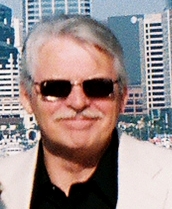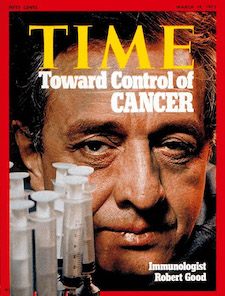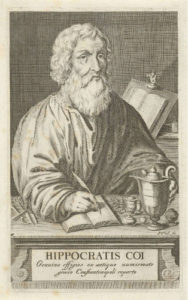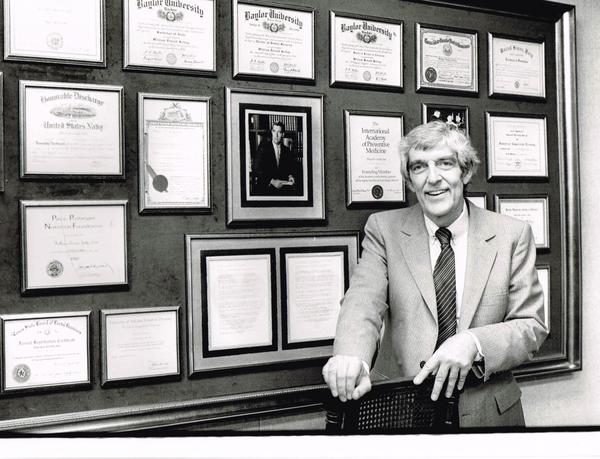“Let us not be hypocrites! It is so easy to condemn our medical profession – and rightly so. Of all the people in the world who should understand physiology and ecology – THEY should – but they do not!“ ~ Dr. Wm. D. Kelley, DDS, MS – 1969
 What we share is our fourth and final chapter of a transcript by Nicholas Gonzalez, M.D. speaking at the World Research Foundation. These records were recently discovered by the widow of Dr. Gonzalez and have been made available to the pubic. Today we will conclude the final part of Dr. Gonzalez’s lecture. The following transcript in addition to additional commentary was BROADCAST on July 20, 2022 on To Health With You! HERE is the LINK to listen! – Dr. Kelley’s Story ~ The FINAL Chapter ~ Editor
What we share is our fourth and final chapter of a transcript by Nicholas Gonzalez, M.D. speaking at the World Research Foundation. These records were recently discovered by the widow of Dr. Gonzalez and have been made available to the pubic. Today we will conclude the final part of Dr. Gonzalez’s lecture. The following transcript in addition to additional commentary was BROADCAST on July 20, 2022 on To Health With You! HERE is the LINK to listen! – Dr. Kelley’s Story ~ The FINAL Chapter ~ Editor
Calcium and Kelley Cancer Case Studies
Calcium is the key element in all this. Calcium has live applications for anybody practicing any kind of oncology. Although my protocol is nutritional and the Kelley Program is nutritional, it applies to chemotherapy or immunotherapy or any of the therapies.

Author – Dr. Nicholas Gonzalez
Think about calcium. It has a lot of functions. We know it is the main cement for the bones, but it also is a very metabolically active. It almost acts like a hormone in the body. It’s what’s called a second messenger in cells. It is one way the neurotransmitters transmit the information into the nucleus. Calcium functions as a carrier of information, and as a stimulator of information systems in the cell. Calcium is also primarily and fundamentally the main cement of cellular membranes, and this has often been overlooked because we tend to think about protein and fats in cell membranes and not think too much about calcium. But calcium really holds the cell membranes together, and this has been well documented.
Now, when the sympathetic nervous system is very strong and active in producing lots of adrenaline, which is one of its main hormones, some membranes seem to get very tight. If you inject adrenaline into somebody, the muscles tend to get tense with a twitching in the mouth, and in their jaws, the jaws will tense up. Cell membranes tighten virtually every tissue in the body. What happens is with sympathetic discharge, calcium goes into the cell membranes and tightens up the membranes.
In an alkaline environment, when the sympathetic nervous system is turned off, membranes get very weak and the calcium leaches out and membranes leak all kinds of junk. Kelley tried to relate this to cancer. He began to realize that with hard tumor patients, the main problem is the sympathetic system was too strong and the membranes were too tight. And when the membranes of the tumors were too tight, his patients own immune system and the patients own pancreatic enzymes couldn’t get at that tumor. On his raw foods diet with all his juices and extra pancreatic enzymes, nutrition would turn a little more alkaline and the sympathetic nervous system would weaken. Calcium would leach out of the membranes and the membranes would get leaky, and WHAMMO! The enzymes could get to that tumor very easily. The patients own immune system could get at that tumor very easily. Chemotherapy could get at that tumor very easily. Chemotherapeutic drugs could get at that tumor very easily. One of the most interesting things you can find in oncology is that you can have two patients with tumors in the same place, colon tumor metastatic to the liver, and one will respond beautifully with total resolution of the tumor, and the other won’t respond at all. It’s pH autonomic balance, if you believe Kelley’s hypothesis. And I have come to believe it.
One patient may have a very strong sympathetic system and you give them chemotherapeutic agents and those cell membranes are so tight nothing is going to get in. Enzymes won’t get into the tumors, chemo won’t get into the tumors, immune system products won’t get into the tumors, and those patients die and the tumors grow. If you alkalinize the body, if you loosen those cell membranes, chemotherapeutic agents, immune system products, pancreatic enzymes can attack those tumors and dissolve them very, very quickly.
With parasympathetic tumors – the tumors of the blood, leukemia, lymphoma, myeloma and melanoma – you’re dealing with the opposite situation. What I have found in my own research, is these patients tend to be too alkaline and their cell membranes tend to be too leaky. Now when cell membranes are too leaky and too alkaline, this tends to stimulate cellular reproduction. This is one of the observations that I am still trying to figure out through genetic evaluations. But when they’re too alkaline, the parasympathetic system is too strong, the cell membranes are too leaky, things happen very quickly. Cells in every tissue in the body tend to reproduce very, very quickly. And the problem with these tumors is they reproduce so quickly that whatever therapeutic agent you use, you’re running a race as to whether you can break them down faster than they are reproducing.
Now, when you use a red meat diet, for example, and the other nutrients which stimulate sympathetic function and tone down parasympathetic function, you get the patients more acid and the sympathetic system turns on and the cell membranes get a little tighter. Cell reproduction slows, reproduction in the tumors tends to slow down. That allows for and gives you time, that gives some you leeway. Interestingly enough, acute lymphocytic leukemia where the tumors that tend to occur in parasympathetic dominance, in the meat eaters, these are alkaline people. They tend to be very aggressive tumors.
I’ve seen in my own training people whose white blood count will go from 2000 to a million in a period of weeks. I’ve seen patients diagnosed with acute lymphocytic die within two weeks of their diagnosis. These are very aggressive tumors, they grow very, very fast. And the reason is leaky cell membranes, alkaline environment, parasympathetic dominance. A too weak sympathetic system. Stimulates cellular growth. You push those people acid, you slow down growth, you give them a therapeutic agent–whether chemotherapy, immunotherapy or my enzyme therapy, time to work. So when you’re treating a cancer patient, you have to think about autonomic physiology, whether you’re using nutrition or chemotherapy.
Now it’s very interesting to treat patients with diet and see the mistakes you make. I’m going to talk about one or two of my mistakes, because you learn from your mistakes, you don’t learn from your failures. I’d like to get up here and tell you I don’t have any mistakes, but boy, do I have some mistakes.
I have a patient, referred from Pat McGrady, my wonderful friend who is out in the audience. He referred a patient with lung cancer, a psychology professor from the Midwest. I said, “Lung cancer. I love lung cancer. It’s a challenge. I like a challenge, I like to get people well so I can laugh at the orthodox people. So I put this patient on a vegetarian diet. She had a hard tumor. I put her on the supplements, large dose of pancreatic enzymes, the coffee enemas, and initially there was no response. The tumor didn’t grow, but it didn’t shrink.
Well, I’m a little smart. I had studied Kelley’s stuff for ten years, so I knew what the problem was, she wasn’t alkaline enough. The sympathetic system was too strong, calcium was staying in the cell membranes, the membranes were too tight, those enzymes that I was feeding her by the pound were not getting to that tumor, the membranes were too tight. So I increased magnesium and potassium. Magnesium and potassium are the ultimate alkalinizes of the body, they depress sympathetic flow, increase parasympathetic flow, and it worked wonderfully, the tumor started to dissolve, the tumor markers were going down. I was real proud of myself, until one day, a Saturday morning, this patient called me hysterical. She’d developed terrible fluid effusions, she had edema in her leg, her belly had bloated up, and it sounded like she was about to die. I was pretty upset. I was upset with myself. I couldn’t believe this was happening. And I thought and I thought and I thought and I thought, for three days, and I didn’t sleep much, and I realized what I’d done.
I’d pushed her alkaline. I’d turned off the sympathetic system and turned on the parasympathetic system. Calcium was leaking out of the membranes, I’d pushed her so alkaline that her tumors were exploding and every cell in her body was leaking fluid because the membranes were so leaky. When I realized what I’d done, I called her up and put her on large doses of calcium and gave her certain supplements that are used to acidify the body. Within three days, the membranes were tighter than they were, the tumors stopped growing and all the fluids started to absorb. I have that patient now exactly where I want her: slightly alkaline, slightly leaky, the membranes are slightly leaky, but not too much so.
When you realize how important or how easy it is to manipulate the body using Kelley’s theory, you begin to appreciate the importance of nutrition. As I said earlier, it doesn’t matter which therapy you use, whether you use chemotherapy or immunotherapy or my enzyme therapy, if you know how to manipulate the body with dietary products you can get your patient exactly where you want to get them. Exactly where you want to get them, and you can get the therapeutic outcome you’re looking for. Now all this theory is wonderful, but people always ask me, “What’s your success rate, how great is it?”
 I spent five years going through 10,000 of Kelley’s records. I put it all together in a five hundred page manuscript (One Man Alone) that I couldn’t get published at the time. People told me that there are two reasons why I couldn’t get published. One reason is the results are too good, the other reason is the results are too bad. So I don’t know, I suppose the truth is somewhere in between. One doctor told me there is no way these results could be so good. After going through 10,000 of Dr. Kelley’s records, I found that patients who were complying on the program and doing the program properly, which of course they have to do, about 70% of them get well. It doesn’t matter what kind of cancer or how advanced it was. Of course, this was a retrospective study and evaluations of Kelley’s patients treated in the past under noncontrolled circumstances, so it doesn’t prove anything by the orthodox standards of proving things. I don’t know whether the orthodox standards of proving things are valid or not, but it certainly doesn’t meet that criterion and I’m the first one to admit it.
I spent five years going through 10,000 of Kelley’s records. I put it all together in a five hundred page manuscript (One Man Alone) that I couldn’t get published at the time. People told me that there are two reasons why I couldn’t get published. One reason is the results are too good, the other reason is the results are too bad. So I don’t know, I suppose the truth is somewhere in between. One doctor told me there is no way these results could be so good. After going through 10,000 of Dr. Kelley’s records, I found that patients who were complying on the program and doing the program properly, which of course they have to do, about 70% of them get well. It doesn’t matter what kind of cancer or how advanced it was. Of course, this was a retrospective study and evaluations of Kelley’s patients treated in the past under noncontrolled circumstances, so it doesn’t prove anything by the orthodox standards of proving things. I don’t know whether the orthodox standards of proving things are valid or not, but it certainly doesn’t meet that criterion and I’m the first one to admit it.
 But in one particular study, and I’m going to mention it here because I always mention it in my lectures, is Kelley’s study of pancreatic cases, because it’s pretty impressive. Dr. Robert Good, the man I was working under, one of the eminent immunologists of our time and under whom I did my immunology fellowship, suggested that we needed a numerator/ denominator study to make sense out of Kelley’s success rate.
But in one particular study, and I’m going to mention it here because I always mention it in my lectures, is Kelley’s study of pancreatic cases, because it’s pretty impressive. Dr. Robert Good, the man I was working under, one of the eminent immunologists of our time and under whom I did my immunology fellowship, suggested that we needed a numerator/ denominator study to make sense out of Kelley’s success rate.
Now what did he mean by that? I mean, it’s okay to find occasional patients who get well, but how many get well? And to do that you have to track down all the patients treated with the therapy and find out what their outcome was. We decided to concentrate on one kind of cancer. Pancreatic cancer. Why pancreatic cancer? Because pancreatic cancer is the worst cancer known to man. It has a mean survival of about four to six months, no one has cured this disease in orthodox medicine. We chose pancreatic cancer because if any patients were alive five or ten years later, no one could argue that this was the normal history the disease. It couldn’t be the normal, natural history of the disease, because nobody with pancreatic cancer (except rarely, those few patients who are treated early with surgery) get cured, virtually…I think the two year survival rate is about 5%, five year survival is less than 1%.
So I knew if I could find a bunch of pancreatic cancer patients, properly diagnosed, treated by Kelley nutritionally, alive five to ten years later, this would be a significant finding. Well arbitrarily, I decided to track down every patient treated by Kelley between the years of 1974 and 1982. I found 23. These are patients who may or may not have gone into therapy, who may or may not have taken a single pill.
I found, and I did extensive interviews with family members and doctors who made the diagnosis, that a first group of ten of these patients turned to Kelley once, decided he was a quack, never did the program, and the median survival rate was six days after seeing Kelley, which is pretty standard for pancreatic cancer, two months, the mean survival was about two months.
“I had the privilege of going to Dr. Kelley in 1975 in Grapevine, Texas for the treatment. Here I am in 2015 at the age of 69. He was a wonderful, caring man and I credit him with the long life I have had. I am so blessed to have found him, and his wisdom and I will always be grateful.“ ~ Linda H.
There was a second group of about seven patients who went on the program partially and eventually gave up, largely because of physician pressure that Kelley was a quack, and even those patients who did the program partially had a higher mean of survival, about 300 days, which is significant and significantly higher than the usual median for pancreatic cancer.
The third group of six patients did the program completely and totally, the mean of survival was eight and one-half years, most of those patients are still alive, though one died of Alzheimers. And as I always say at every lecture, if you have your pancreatic cancer patients dying of old age and Alzheimers, you have succeeded as a physician. So, mean survival eight and a half years and growing. Well, that’s wonderful, that’s Kelley’s success rate, in that particular series of patients, every patient who followed the program did well. Yes, it’s a small group, it’s only six, but science always begin with observations, anecdotal observations, and small groups of patients. They don’t begin with double blind clinical trials. They begin with simple observations. It was a simple observation, maybe it did not prove Kelley was a genius, but his program worked. Sometimes if you have enough scar tissue from previous operations, you can’t get the therapeutic agents to the site of the tumors, and the tumors will grow. I’ve had that happen in patients who have had three or four operations.
Conclusion: Why People Don’t Get Well

Hippocrates by Pieter Philippe (1635-1702). Rijks Museum.
The third reason why Dr. Kelley said people don’t get well, and this one is hard for me to accept because I was trained as an orthodox immunologist and I believed that everything will reduce to science. But Kelley always said that the main reason patients don’t get well is a lack of faith. Now, I’m not going to go into a big thing on that, but patients who really don’t believe what they’re doing, whatever the therapy is, they’re not going to get well. We’ll let Bernie Siegel and Norman Cousins talk about that. What Kelley did, and what we tried to do, was figure out what the physiological correlation to faith means.
Believe me, I’ve seen patients in my office who had no faith in what I do. Most of the patients who come to me figure that if I was any good, I’d be the head of Sloan Kettering. If I was any good, I wouldn’t be doing this crazy nutrition. Believe me, most patients who come into my office are not happy about coffee enemas or carrot juice or vegetarian diets or even eating meat. They think the whole thing is crazy. They come because they’re scared. Because everything else has failed, and because I’m their last hope. They’re not there because they want to be there.
A lot of patients come in without faith. Some of them get it as they do better, some of them never get it and even if they do the program perfectly, if they have no faith in what they do, they die. I’ve never seen a patient who has absolutely no faith in the program–even if they do it completely–who lives.
An interesting problem, now why should that be? Well, if you don’t have faith, it creates anxiety. Lack of faith equals anxiety. When you have anxiety, what happens? When you have anxiety, you turn on the sympathetic nervous system. When you have no faith that things are going to go well, you have to live in a state of vigilance. When we live in a state of vigilance, the sympathetic nervous system fires constantly. When the sympathetic nervous system fires constantly, you get way too acid, cell membranes get way too tight, nutrients and enzymes can’t get to the site of the tumor, and the lack of faith in physiological channels leads to death, period. It happens all the time. Now interestingly enough, with the soft tumor patients, the patients who have the leukemia, lymphomas, myelomas and melanomas, sometimes lack of faith is a good thing, and I’ll tell you what I mean by that.
In 1982 Kelley was working on a leukemia patient and I happened to be in his office. A six year old girl, treated at Stanford University, had acute lymphocytic leukemia, failed chemotherapy. Now acute lymphocytic leukemia is the pride and joy of orthodox oncology because it’s one of the very few cancers that can be treated successfully with chemotherapy. This young lady, age six, was not doing well at all. And she and her mother decided to come see this quack dentist Kelley and start his program. She wasn’t doing well with Kelley either, and I said, “Kelley, what’s going on?”

A young Dr. Gonzalez with his mentor… Dr. William D. Kelley
He said, “Okay, Gonzalez, I’m going to teach you about medicine.” So I got on the phone, the girl’s mother was on the phone, a very sweet woman, kind of Northern California, into meditation. She started to talk about what she was doing with her daughter, she said,” I take my daughter down to the beach, and I have her think positive thoughts and I have her draw white cells on the sand and think about them attacking the tumor. I’ve read all the meditation and raw food diet books”, and Kelley said — this is the first time I’ve ever heard him get angry–he said, “You take those books and you throw them in the garbage, and you go out to the 7-11 or the local K-Mart and buy that girl electronic games and have her start watching six hours a day of violent cartoon shows on TV.”
Well, I thought this was a big joke, and I started to get off the phone. I thought he’s having a nervous breakdown, right in front of me, but he wasn’t kidding. One had thing I learned about Kelley, when you got a tongue-lashing, you listen and you listen carefully. You don’t ask why until later. Now, he had that woman in tears. He said, “No meditation, no white cells drawn in the sand, no thinking positive thoughts”. He said, “I want your daughter to get so mean and nasty that instead of loving her brother, she kicks him in the shins.”
Now Dr. Kelley got off the phone and I said, “Kelley, what the hell are you doing, you’re crazy”. He said, “I’m not crazy, I’m trying to save that girl’s life. Would you rather have her die?” I said, “Well, what are you doing?” He said, “She’s a leukemia patient, she’s too alkaline, her sympathetic system is too weak, she’s already in this very alkaline state and meditation, relaxation and positive thinking pushes her more alkaline. It turns off the sympathetic system – the whole point in biofeedback and meditation is to tone down sympathetic function. There are dozens of studies in orthodox literature documenting that. That’s wonderful if you have a strong sympathetic system, but if your sympathetic system is too weak and you tone it down, you could die.”
That girl was dying because her sympathetic system was too weak and the parasympathetic system was too strong. Her mother was putting her on all these different things that she’d learned about, which was further weakening her sympathetic system, the cell membranes were getting leakier and leakier, the cells were reproducing faster and faster, so even Kelley couldn’t get her well.
Well, that mother had enough sense to listen to Dr. Kelley. She went out and bought electronic games, even though it was against everything she believed in. She had her daughter watch aggressive cartoons, six hours a day and within two weeks, her white count stopped increasing and within four weeks, it started to drop. When I saw that – and I wouldn’t believe it if you told me this story – I don’t expect you to believe it. But it shows you how complicated cancer therapy can be and how easy it can be, how easily it can be explained, if you start thinking about nutrition…

An Email Received…
Thanks for the replay of the 4 part Dr. Kelley series. I did the program in 1981, not for cancer but to adjust my metabolic rate to prevent hypoglycemia. Of course I turned out to be a Type 5 and that did the trick. Many in my social circle seemed to suffer from hypoglycemia (seemed to be an epidemic of it among baby boomers at the time). Many in my group were also wannabe vegetarians and so parasympathetic dominant.
That series helps clarify much of the science that wasn’t so clear back then. I have used principles from the program for the last 40 years. Metabolic science have always been of interest to me and I also like to compare techniques from Asian cultural medicine such as Ayurveda and Chinese medicine.
Best Regards,
Brian Conrad
